AWS Solutions Architect Associate Certification
Services Application Integration
API Gateway
In this article, we delve into AWS API Gateway, explaining its purpose and the challenges it overcomes when building and managing APIs. API Gateway streamlines the integration of various backend services while providing robust tools for API management, security, transformation, and monitoring.
Streamlining Backend Integration
A common challenge in modern application architectures is unifying multiple backend services, data sources, and functions under a single API interface. API Gateway simplifies this integration by connecting with services such as AWS Lambda, EC2 instances, ECS, and other HTTP endpoints. This enables you to aggregate data from disparate systems into a centralized API and reduce development complexity.
Another key benefit is the efficient management of APIs at scale. Deploying, versioning, and maintaining APIs manually can be error-prone. API Gateway addresses these issues by centralizing API creation, lifecycle management, and deployment processes. Its built-in tools support seamless versioning and deployment, ensuring that your API evolves with your business needs.
Moreover, API Gateway helps transform requests and responses between differing data formats. It validates and maps data from backend services to client-required formats, ensuring consistency and reliability across end-to-end communication.
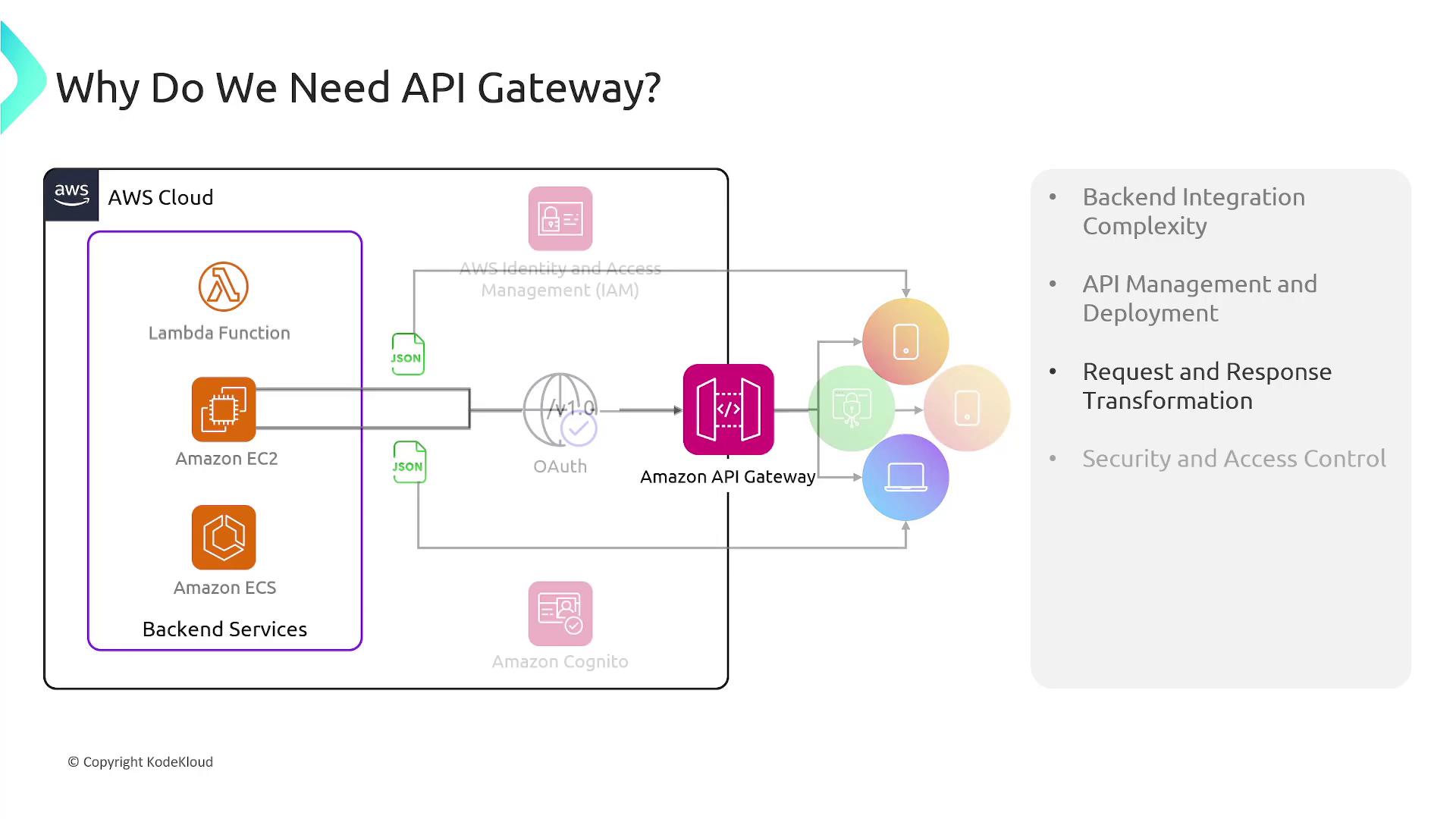
Note
API Gateway is particularly beneficial for organizations looking to streamline complex integrations while reducing operational overhead.
Ensuring Robust Security and Traffic Management
Security is paramount for API development. Protecting your endpoints with proper authentication and authorization mechanisms is essential. API Gateway integrates with AWS IAM, OAuth, and Amazon Cognito, allowing you to enforce strict access controls and maintain a secure API environment.
In addition, API Gateway is equipped to handle excess traffic and mitigate abuse. Instead of writing custom logic, you can configure rate limits and throttling policies that safeguard your backend from traffic surges while ensuring optimal system performance.
For insights into your API’s performance, API Gateway uses comprehensive monitoring, logging, and analytics features. These capabilities allow you to track usage, diagnose issues, and measure latency, facilitating rapid optimization and troubleshooting.
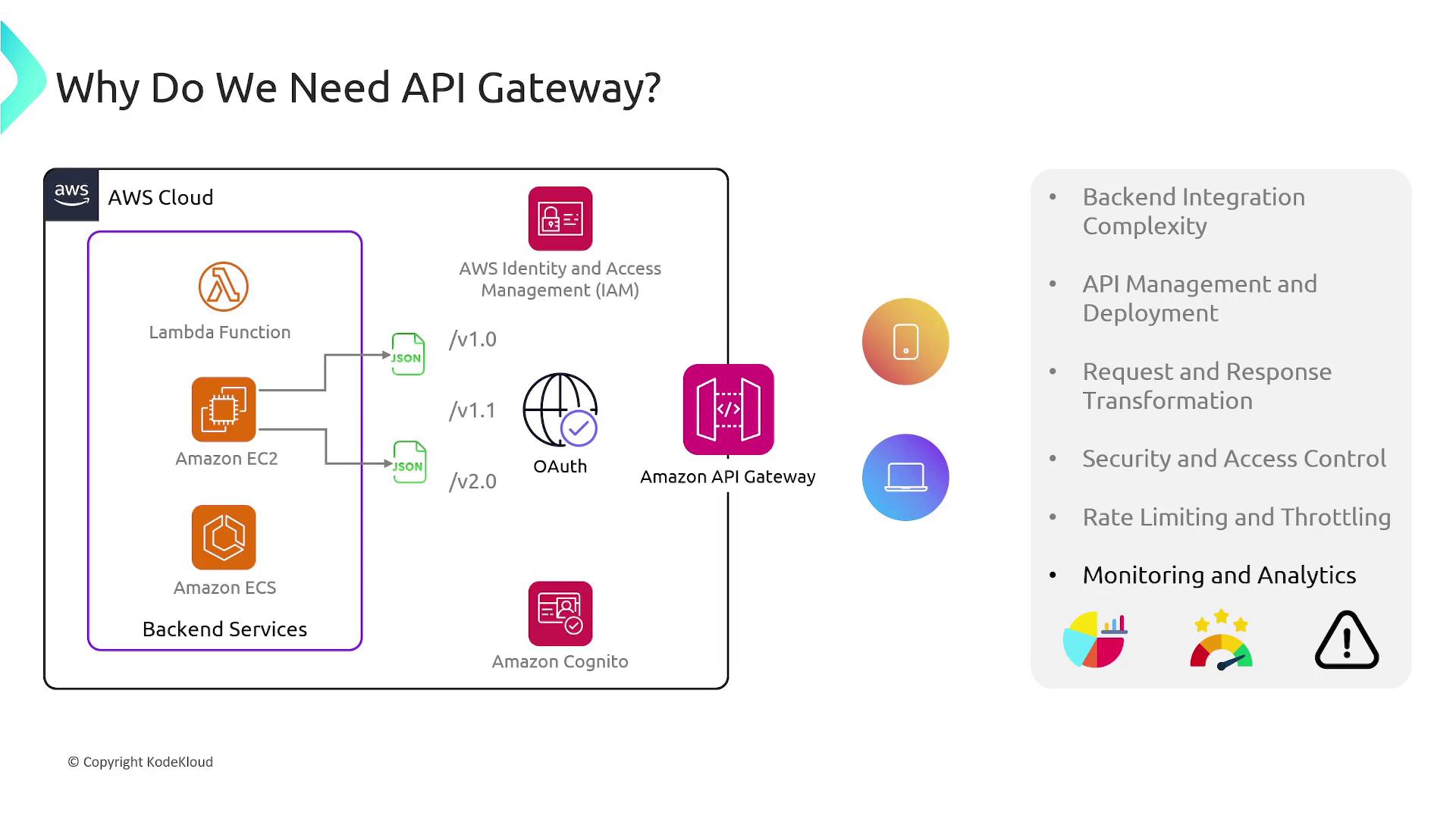
Documentation and Developer Experience
High-quality documentation is crucial for API adoption and developer success. API Gateway supports auto-generated documentation and the creation of developer portals that include testing capabilities. This helps minimize configuration drift and ensures that the API behavior is always in sync with its documentation.
API Types Supported by API Gateway
API Gateway supports a variety of API models designed to meet different application needs:
HTTP API
HTTP APIs enable you to route requests to AWS Lambda functions or any routable HTTP endpoint. For example, when a client calls an HTTP API, API Gateway forwards the request to a Lambda function and returns its corresponding response.
WebSocket API
WebSocket APIs support bi-directional, real-time communication, making them ideal for applications such as chat services, collaboration platforms, and real-time financial trading systems. With WebSocket APIs, both clients and servers can send messages independently for instant communication and notifications.
REST API
REST APIs consist of resources and methods integrated with backend HTTP endpoints, Lambda functions, or other AWS services. They operate on a synchronous request-response model, making them suitable for applications requiring immediate responses.
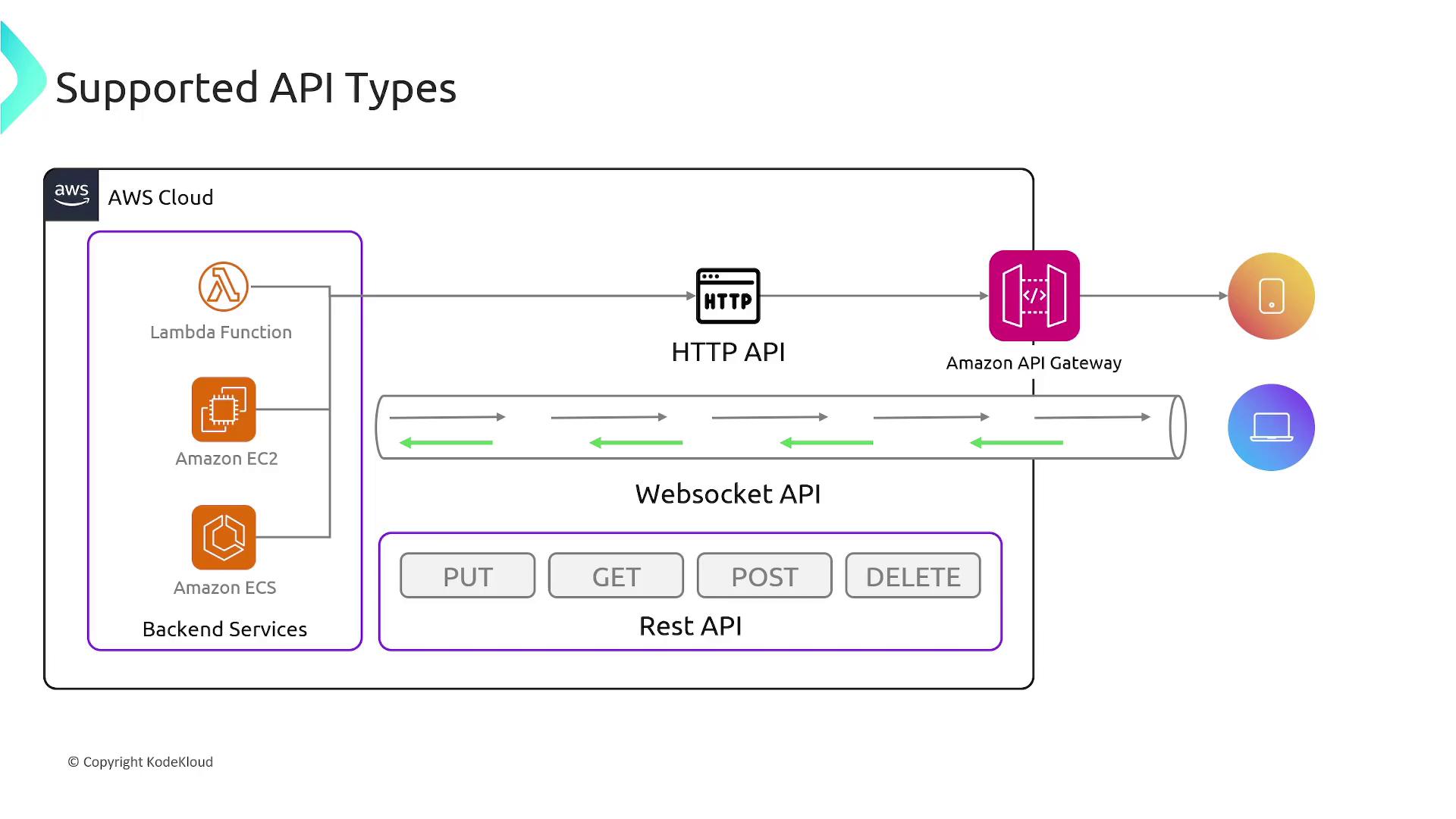
Key Features and Benefits
- Unified API Creation: Whether you need RESTful, WebSocket, or HTTP APIs, API Gateway simplifies their creation and management.
- Private Resource Routing: Enable secure routing to resources within your VPC. API Gateway can expose private load balancers (application or network) and IP-based services registered in AWS CloudMap.
- Resiliency: Protect backend services by setting throttling rules and caching configurations (for REST APIs) with customizable keys and time-to-live settings during traffic surges.
- Monitoring and Analytics: With integration into Amazon CloudWatch, you get detailed dashboards and metrics (e.g., API call counts, latency, error rates) that can trigger custom alarms for proactive monitoring.
- Authorization and Access Control: Use Signature Version 4 for secure authentication, along with AWS IAM, Lambda-based authorizers for JWT or SAML tokens, and API key management for controlled third-party access.
- SDK Generation: Automatically generate client SDKs for platforms such as Java, JavaScript, Android, Objective-C, Swift, and Ruby, complete with integrated API key handling and AWS request signing.
- Lifecycle Management: Manage multiple versions and stages (e.g., alpha, beta, production) concurrently, with the ability to associate custom domain names to streamline transitions between environments.
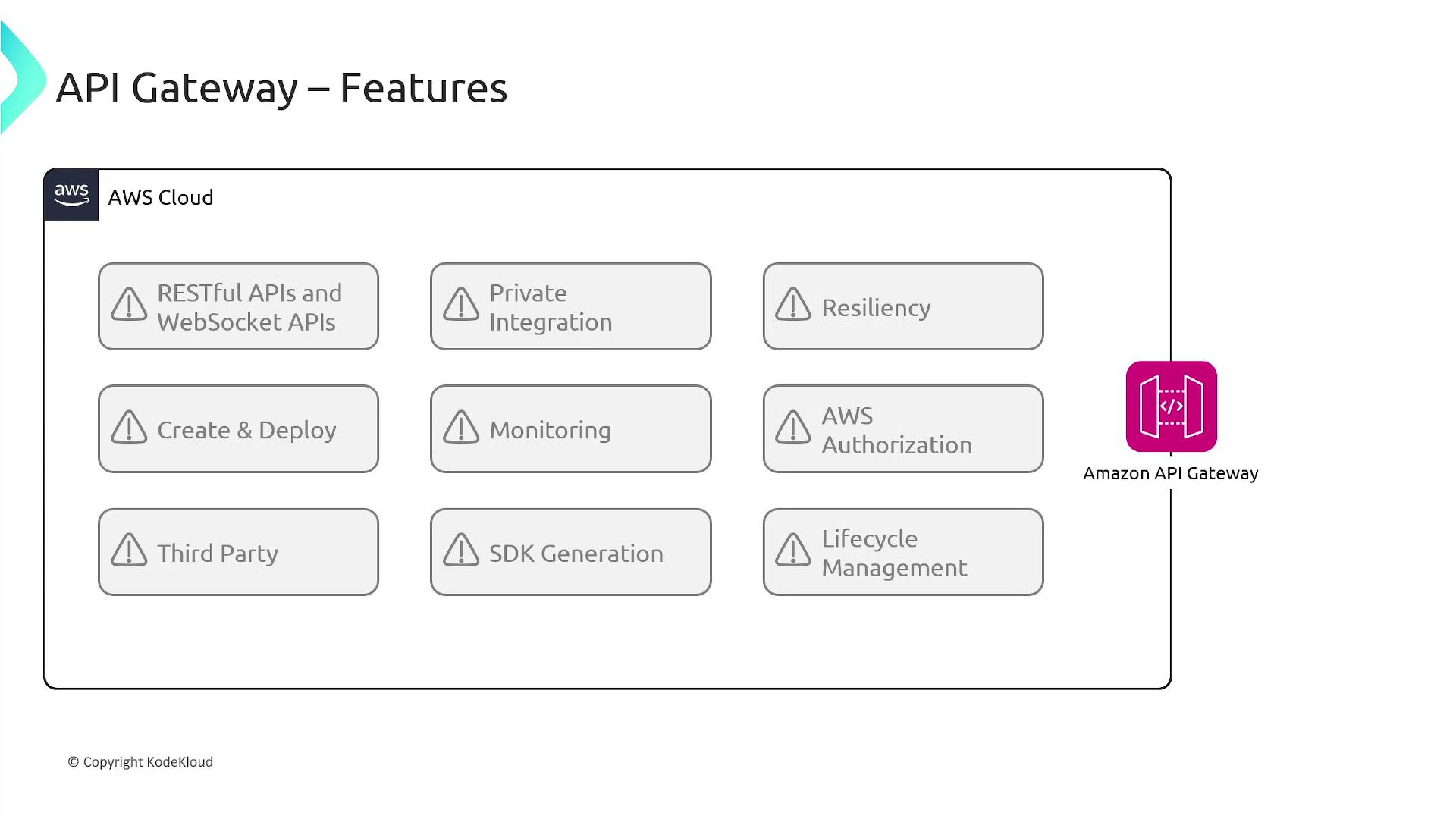
Integrations
API Gateway seamlessly integrates with a wide range of AWS services, including:
- AWS Lambda: Invoke Lambda functions to process API requests.
- Elastic Beanstalk and EC2: Integrate APIs with your application hosted on EC2 instances handling backend logic.
- Amazon S3: Serve static website assets like HTML, CSS, and JavaScript.
- DynamoDB: Facilitate efficient data storage and retrieval.
- AWS Step Functions: Orchestrate workflows and complex business processes.
- Kinesis Data Streams: Process and analyze real-time data streams.
- RDS: Connect with relational databases to execute SQL queries.
- Cognito: Manage user authentication and authorization.
- Secrets Manager: Securely store and manage sensitive credentials and API keys.
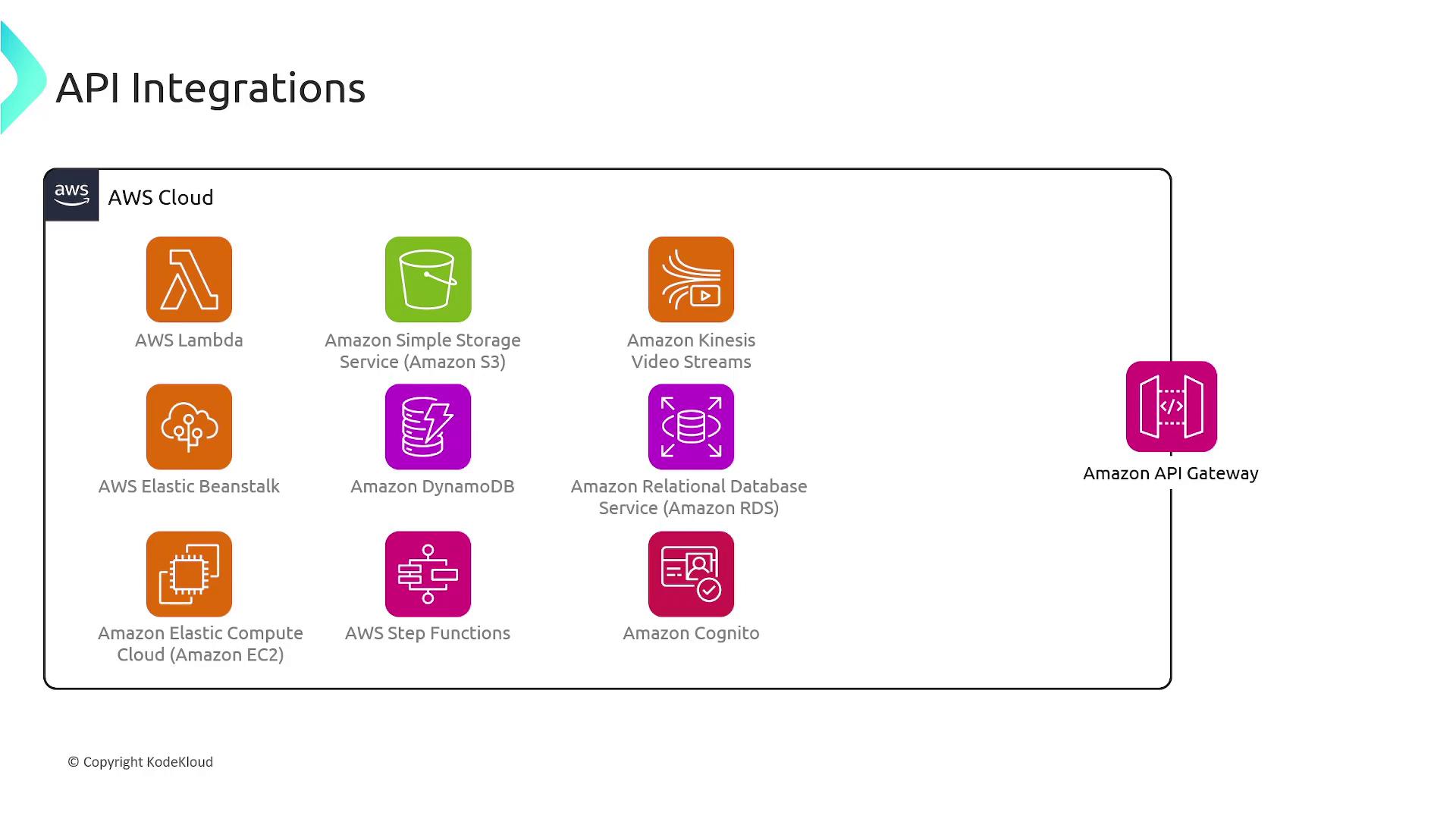
By leveraging these integrations, API Gateway offers a flexible and robust platform for building, deploying, and securing modern APIs on AWS.
Further Reading
For additional insights on API design and AWS services, visit AWS Documentation and API Gateway Developer Guide.
Watch Video
Watch video content